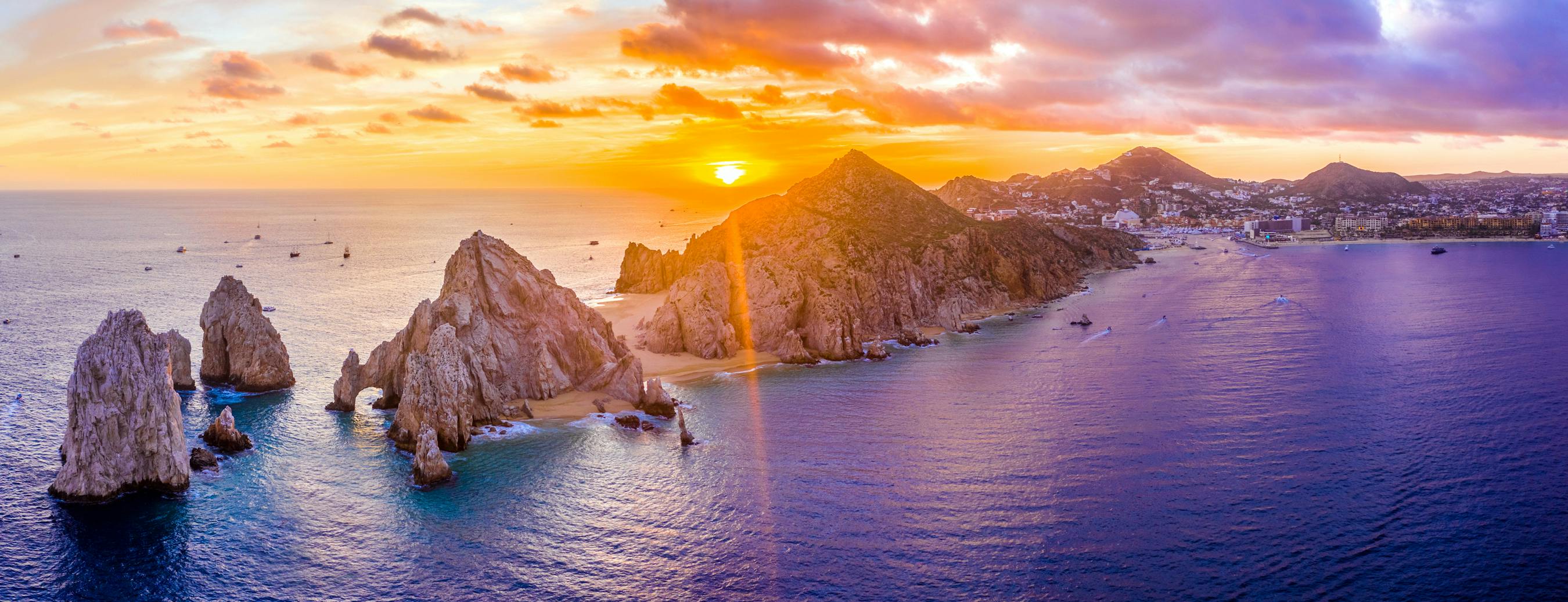Cruise Central America and Mexico: Everything You Need to Know
Mexico and the adjacent countries of Central America are geographically close to the United States and are, of course, part of the Americas, but they also are a world apart.
Mexico’s seemingly endless coastline borders the Pacific Ocean and the Caribbean Sea as well as the Gulf of Mexico, and Central America’s countries (Belize, Costa Rica, El Salvador, Guatemala, Honduras, Nicaragua and Panama) enjoy the Caribbean to the east and the Pacific to the west. Anyone opting to cruise Central America and Mexico will discover a bounty of memorable natural and cultural experiences.
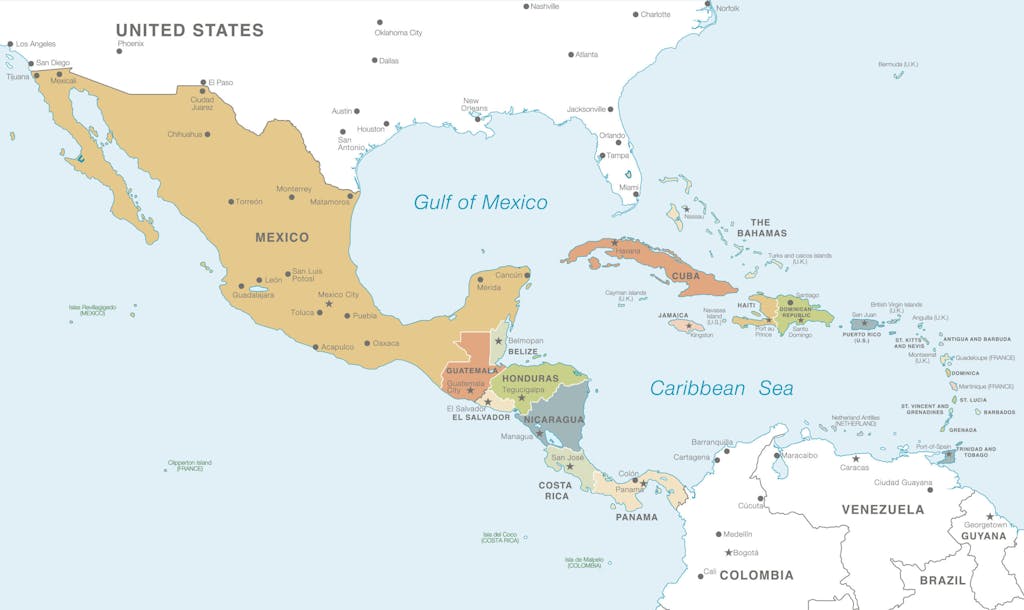
When choosing a cruise to Mexico or Central America, don’t fall into the trap of thinking each country is a replica of the next. The landscape is distinguished by lush jungles, deserts, volcanoes, ancient ruins, stunning beaches and bustling cities in a (usually) tropical climate. If you’re heading south of the border, consider the many nuances between Central America and Mexico, including a language that has its own accent and quirks.
The similarities of Mexico and Central America
As Latin American countries, Mexico and the seven nations of Central America are primarily Spanish speaking (Belize, where English is the official language, being the exception). Mexico governed five Central American nations from 1822 until 1823, and Chiapas became one of Mexico’s 31 states after the separation. The two regions also are alike in their Roman Catholic religious foundations.
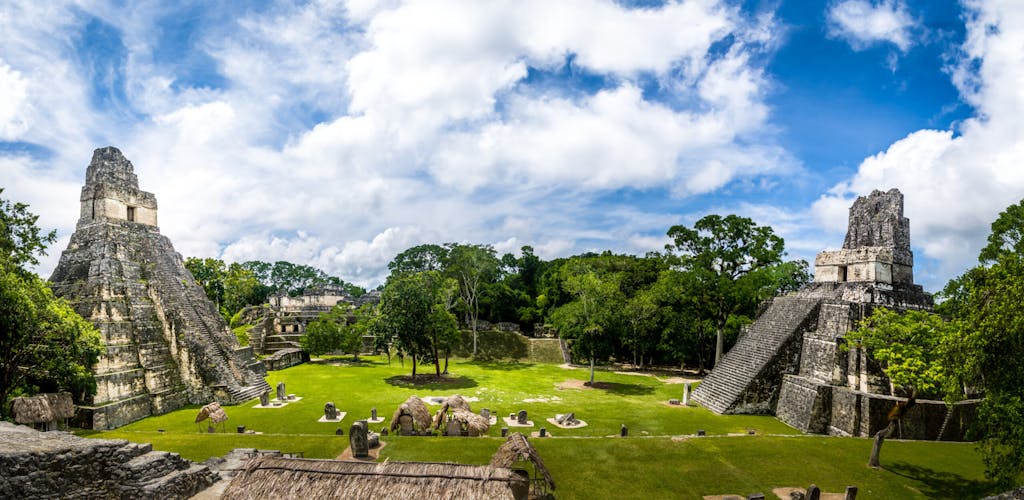
Before being colonized by the Spanish and Portuguese, Mexico and the countries of Central America had a rich Maya heritage. This is perhaps where their shared “tortilla culture” began, with so many staples of Mexican and Central American cuisine based upon corn.
Although politically Mexico is grouped with North America, it still shares many holidays and traditions with its seven Central American neighbors.
The differences between Mexico and Central America
Mexico is 761,606 square miles of landmass in North America. Combined, all of Central America spans about 202,230 square miles — a fraction of the size of Mexico. For comparison, El Salvador is 8,124 square miles, smaller than the state of Maryland.
Apart from sheer size, the two regions differ culturally. Sharing a border with the U.S., Mexico is heavily influenced by American politics and pop culture. Its booming tourism industry relies on tourists from the U.S. and abroad, which fuels a healthy number of hotels, resorts, restaurants and tours.
Central America is less touristed, although countries like Costa Rica have rapidly increased in popularity for their eco-tourism. The nations of Central America are more diverse and countries such as Guatemala still boast a large indigenous population (43 percent vs. Mexico’s 19.5 percent). Much of Central America is welcoming to holidaymakers, although the coordinated infrastructure for tourism is stronger in Mexico than it is in Central America.
Why you should sail to Mexico and Central America
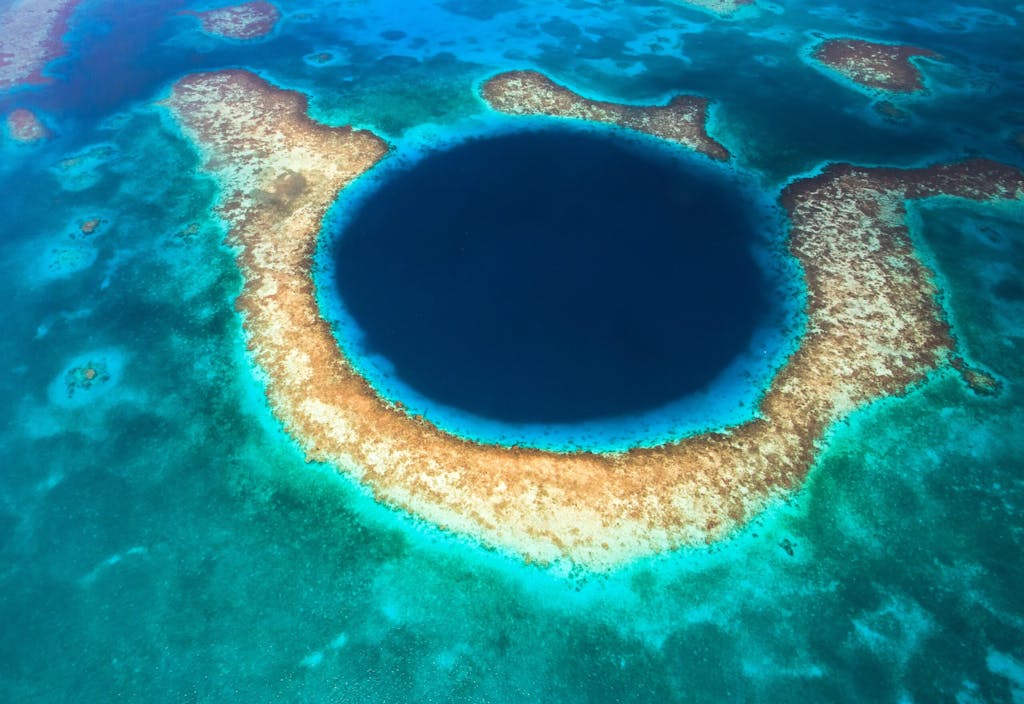
The shores of Mexico and Central American nations such as Belize offer pristine stretches of white sand and turquoise seas, perfect for an idyllic beach vacation. But that is really the least of the offerings on a cruise itinerary.
The cultural diversity and even the nature of each port will set the region apart even on a largely Mexican itinerary replete with touristy bars and trinket shops. If you look beyond the standard Mexico cruise offerings, you’ll find the wild whales of Baja California or the artsy commune of Todos Santos.
Cruise Central America and you will be greeted by local markets and curious monkeys. The biodiversity of this part of the world not only produces a fantastic cup of coffee but also opportunities to hike, kayak and learn about the environment. Belize City offers barrier reefs, a Great Blue Hole, cave tubing near Maya ruins and even a taste of small-batch rum.
A highlight of any sailing in Central America is a Panama Canal transit. This engineering feat allows you to begin or end stateside for your Mexico/Central America adventure.
The cultural cuisine of Central America and Mexico

A particularly bright spot in any cruise vacation is sampling the food and beverages of your destinations. This applies to the ports of Central America and Mexico, where fresh seafood melds with citrus and such staples as rice and beans for healthy and fulfilling favorites. Indigenous, European and modern-day flavors combine to provide gastronomic delights on and off your ship, whether it’s something as simple as a fish taco or a vegan take on ceviche.
Don’t be afraid to experiment with new dishes here in Mexico and Central America, where corn in all its forms is a staple of the local diet, but a bounty of fresh fruits and other vegetables round out a colorful plate.
Also consider the variations in culinary offerings between ports like Puerto Quetzal, Guatemala, where you might find a traditional, spicy chicken stew or tostadas, and dishes such as sancocho, a traditional stew in Caribbean cuisines in countries where Spanish is spoken.
What’s the best time to visit Central America and Mexico?

Central America and Mexico are year-round destinations but keep in mind that these places experience wet and dry seasons.
For most of Central America, dry or favorable months include January through March. Nicaragua, Panama and Honduras are typically dry even longer — November through April. Costa Rica is dry and sunny in late December until April. The best time for Belize tends to be after February.
Mexico enjoys steady, year-round tourism, although it is susceptible during hurricane season, which can run from late May through November. High season is December through April; May and June and September through November are the low seasons.
Visiting Mexico during this time of year can be spectacular because it’s less crowded: Día de Los Muertos occurs in early November; and the Monarch butterfly migration takes place in mid-November.
The height of cruising in this region typically occurs in early spring. To coincide with prime whale-watching near Baja, Mexico, time your cruise for February through April. One note: Mexico is an especially popular hotspot for spring breakers on getaways in March and April.
Your packing list for Mexico and Central America

Your cruise ship is designed to provide every comfort, but it’s also important to know what to pack for a cruise to Mexico and Central America. If you’ll be visiting Mexican and Central American ports such as Cozumel, Mexico; Roatán, Honduras; or Puntarenas, Costa Rica, keep these essentials in mind.
- Reliable travel credit cards (at least one extra for emergencies) and a debit card for ATMs. Make sure your credit card does not charge foreign transaction fees. For anything not covered with plastic “currency” (souvenir shopping at a market or tips), you can easily withdraw local currency from an ATM in port. Do so at a banking location during daylight hours, not at generic ATM. Each one of these eight countries uses a different monetary unit.
- Filtering water bottle. A water bottle will remind you to stay hydrated, and a water bottle with a built-in filter, like LifeStraw, will help you worry less about how reliable your water source may be.
- Reef-safe sunscreen and hat. Water-based activities are a large part of this type of itinerary, and even in rainy season, you will need to guard against the sun’s rays. Make sure to protect the fragile marine ecosystems as well with sunblock designated as reef safe. Take a hat to protect your scalp and neck.
- Bug spray. Especially if you’re venturing into lush rainforest or jungle, you’ll want to protect against any bites and potential mosquito-borne illness.
- Motion sickness medication and other over-the-counter medication. Even if you don’t feel the motion on your cruise ship, smaller vessels used for whale-watching, day cruising or fishing can be more likely to trigger seasickness if you’re susceptible. Also, pack some aspirin or other pain reliever, an anti-diarrheal and an antacid.
- Light jacket or fleece. You might have guessed linen shirts or flowy sundresses and plenty of shorts for your cruising wardrobe, but be sure to pack a windbreaker and/or fleece jacket for your voyage through Mexico and Central America. Apart from the air-conditioning on your ship, you might catch a chill on a tour at a higher altitude.
- Hand sanitizer. Pandemic or no, keeping your hands clean will always and forever be a mandatory part of healthy travel. Be sure to always carry a mini-sanitizer with you.
- Light, waterproof daypack. This will accompany you on excursions in port, carrying your water bottle, sunscreen and anything you might pick up along the way.
- Comfortable walking shoes. This is a given. On excursions, in the struggle between comfort and glamour, let comfort win. Bonus points if these are waterproof. If you’re looking to pack light, consider a hiking sandal.
- Binoculars or a telephoto lens. When it comes time to see (or take a photo of) that breaching whale or the colorful toucan in the tree, a phone camera isn’t always the best tool for the job. Make sure you can zoom in either with high-powered binoculars or a special lens for your camera if you’re looking to capture the moment.
What not to pack
Your finest jewelry and other valuables. They might be safe to wear to dinner onboard the ship, it’s not worth risking loss or theft during your wanderings ashore.
Mexico cruise ports
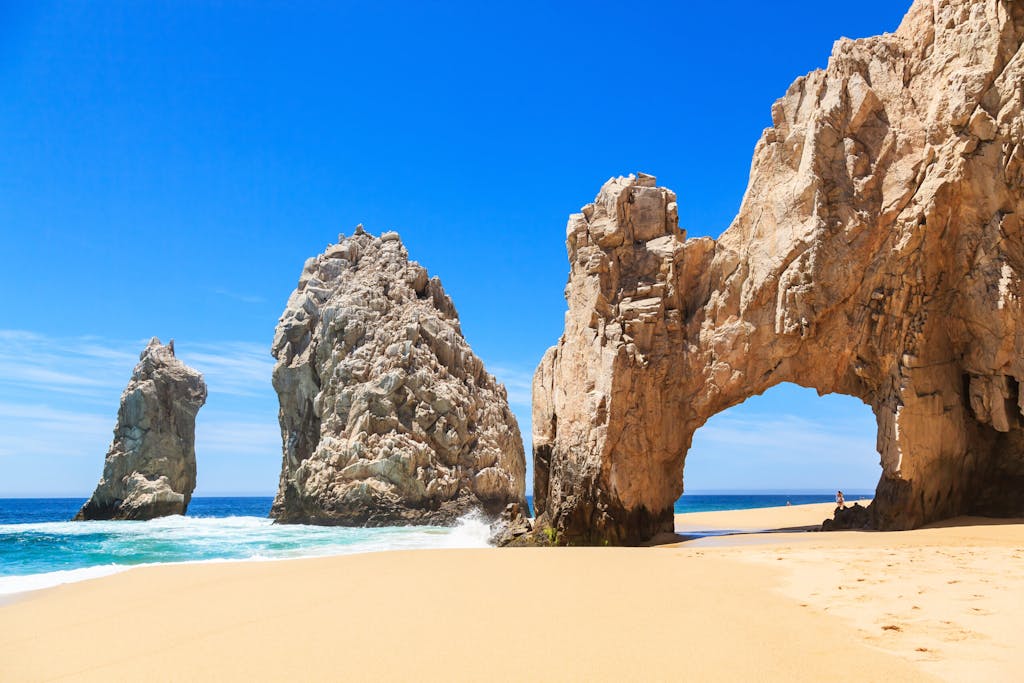
Cabo San Lucas: On the southern tip of the Baja California peninsula, where the Pacific Ocean meets the Sea of Cortéz, Cabo is a tourist magnet known for scenic beaches framed by rocky arches, sunny days on the water and a burgeoning culinary scene.
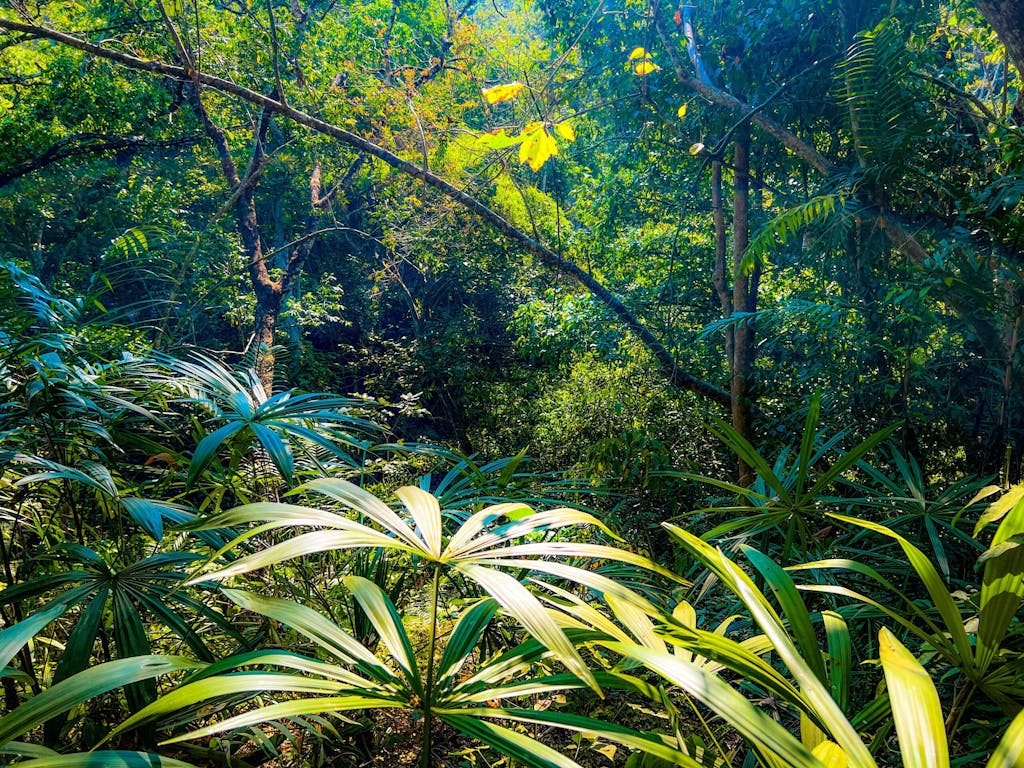
Puerto Vallarta: On the Pacific Coast of Mexico, Puerto Vallarta is nestled at the base of the Sierra Madre mountains. Walk the waterfront malecón boardwalk, visit a local art gallery or spend the day alfresco on a beach or in the Vallarta Botanical Gardens.
Cozumel: Cozumel, an island in the Caribbean, is a popular port known for sparkling waters where visitors can snorkel, swim, dive or simply sunbathe on the shore.

La Paz: At the very southern tip of Mexico’s Baja California Sur, cruisers will encounter La Paz, known for a local population of whale sharks. Visitors can snorkel with these friendly mammals in the Sea of Cortéz or stroll along the city’s malecón admiring its various sculptures.
Isla Espíritu Santo: Stark in its contrast of lapis-colored water and shades of brown from its volcanic ash, the Island of the Holy Spirit is just off La Paz in the Sea of Cortéz. This larger island is part of a biosphere reserve and the only known habitat to species including the black jack rabbit.
Isla San José and Isla San Francisco: In the Sea of Cortéz, these islands also off La Paz are ripe for hikes, snorkeling and strolling along the crescent bay of Isla San Francisco. Don’t forget to be on the lookout for endemic reptiles, birds and fish.
Central American cruise ports
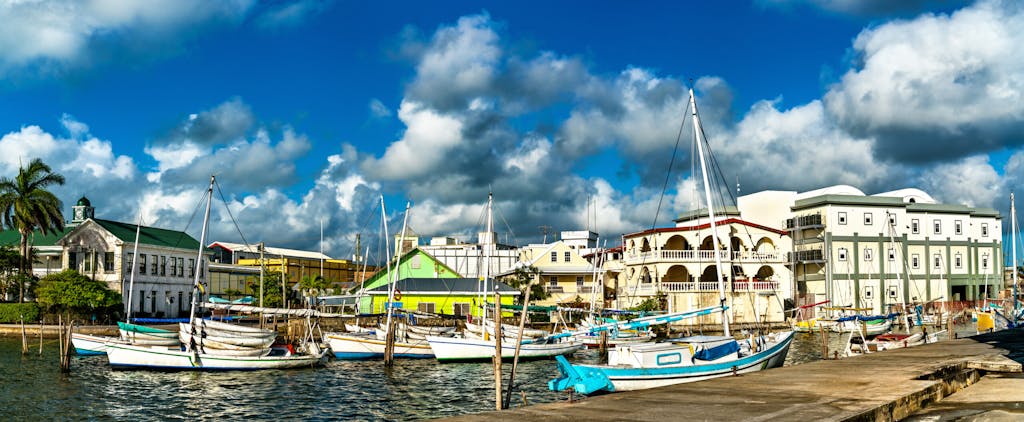
Belize City, Belize: Amid colonial architecture and the seaport, Belize City will surprise visitors with its diversity and historic downtown, home to the only functioning manually operated swing bridge in the world. Day trips to the Great Blue Hole (largest sea hole in the world) or some of Belize’s more accessible caves will astonish and impress. The adventurous can book a cave-tubing excursion.
Colón, Panama: At the gates to the Panama Canal, Colón offers museums that document the feat of engineering as well as nature tours that traverse its massive Gatún Lake. From these sightseeing boats, you can sneak a peek at the local populations of monkeys, sloths and tropical birds while learning more about life in Panama and around the canal.

Fuerte Amador (Panama City): Fuerte Amador, the cruise port for Panama City, translates to “strong lover.” You might fall in love with this canal-side Panamanian port for its architecture — the Biomuseo was designed by architect Frank Gehry — as well as visit a nearby native Emberá Village to learn about local and indigenous cultures.
Puntarenas, Costa Rica: Puntarenas, a tourism hub on Costa Rica’s Pacific coast, welcomes visitors with its stellar beaches and inlets as well as access to the country’s exceptional biodiversity. Book a tour to the remarkable Monteverde Cloud Forest, with an option to zip line.
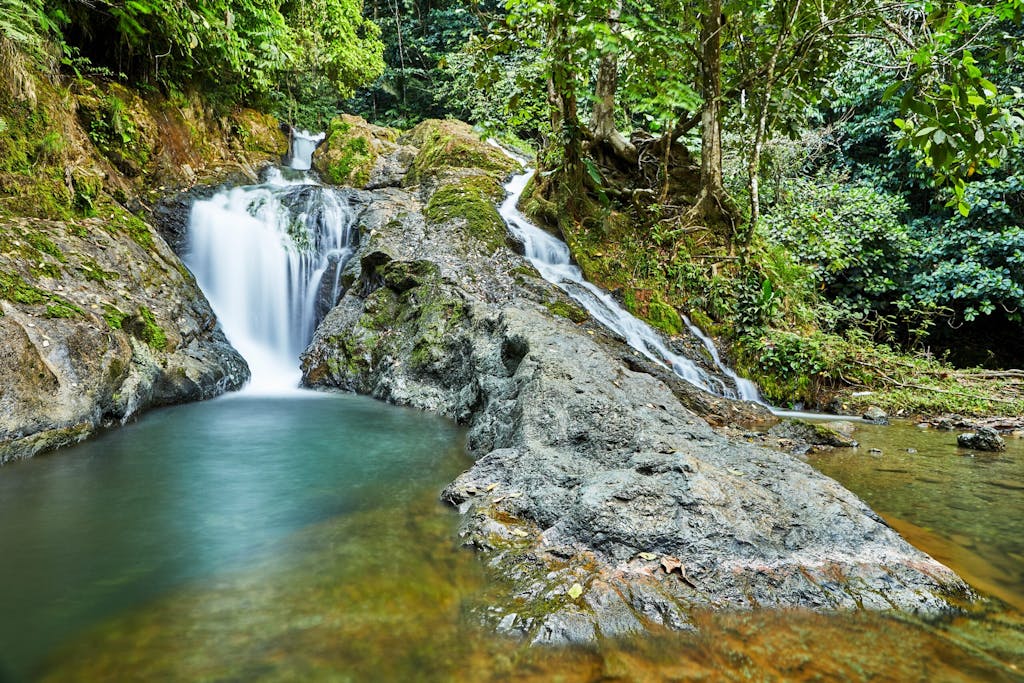
Golfito, Costa Rica: If you’re lucky enough to dock along the Golfo Dulce, or “sweet coast,” in western Costa Rica, be sure to stop at the national wildlife refuge and/or the Garden of Orchids in Golfito, a jaw-dropping botanical jewel tucked into in the jungles of Costa Rica.
Puerto Limón, Costa Rica: On the Caribbean coast of Costa Rica, cruisers can get a better sense of local life. Puerto Limón, less touristed than other areas, offers nature tours and abundant history. In 1502, Christopher Columbus landed here on his final voyage, naming the country for its “rich coast.”
Puerto Quetzal, Guatemala: Named after the national bird of Guatemala, Quetzal, on the Pacific side, was completed in 1984 as an entry point for the nearby Tikal National Park, a UNESCO World Heritage Center. Set within the Maya Forest Biosphere Reserve, this is one of the largest and most important remaining sites of Maya civilization. Don’t miss La Antigua, the cobblestoned old capital of Guatemala, featuring 16th-century architecture but modern charms.

Roatán Island, Honduras: As the largest of the Honduran Bay Islands, Roatán is home to the Caribbean’s largest coral reef and ample shipwrecks, making it a coveted spot for snorkelers and divers. Those looking for drier land can easily spend the day at Gumbalimba Park, a refuge for lesser-known animals and home to hummingbirds, capuchin monkeys and a sloth sanctuary.
Inspired to cruise Central America and Mexico? Silversea’s itineraries in Central America & the Caribbean make it easy to explore.
